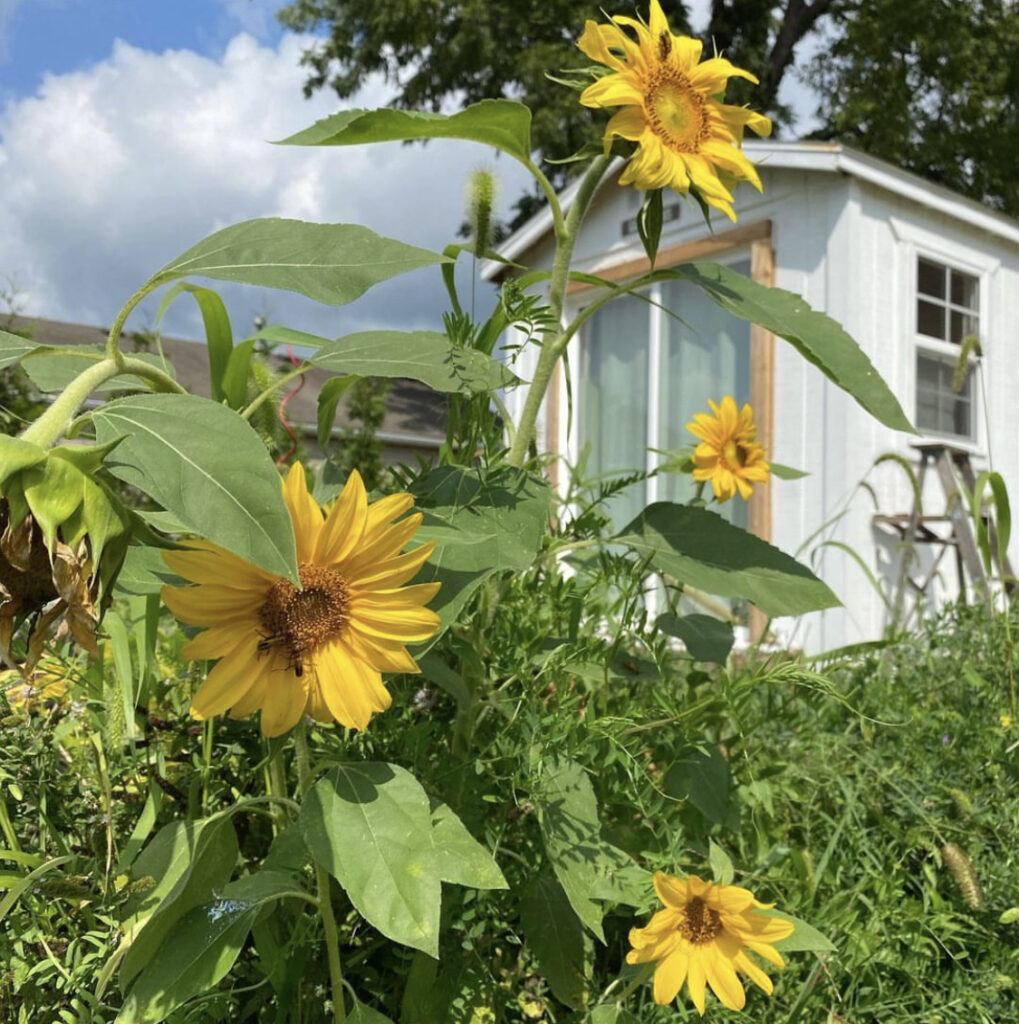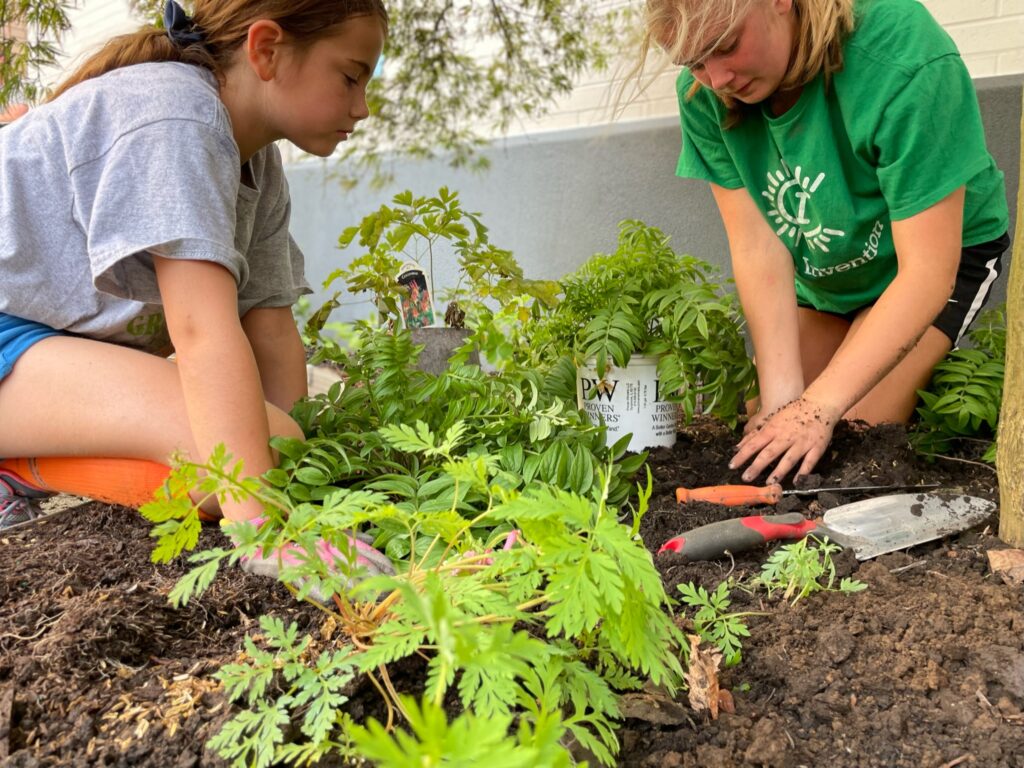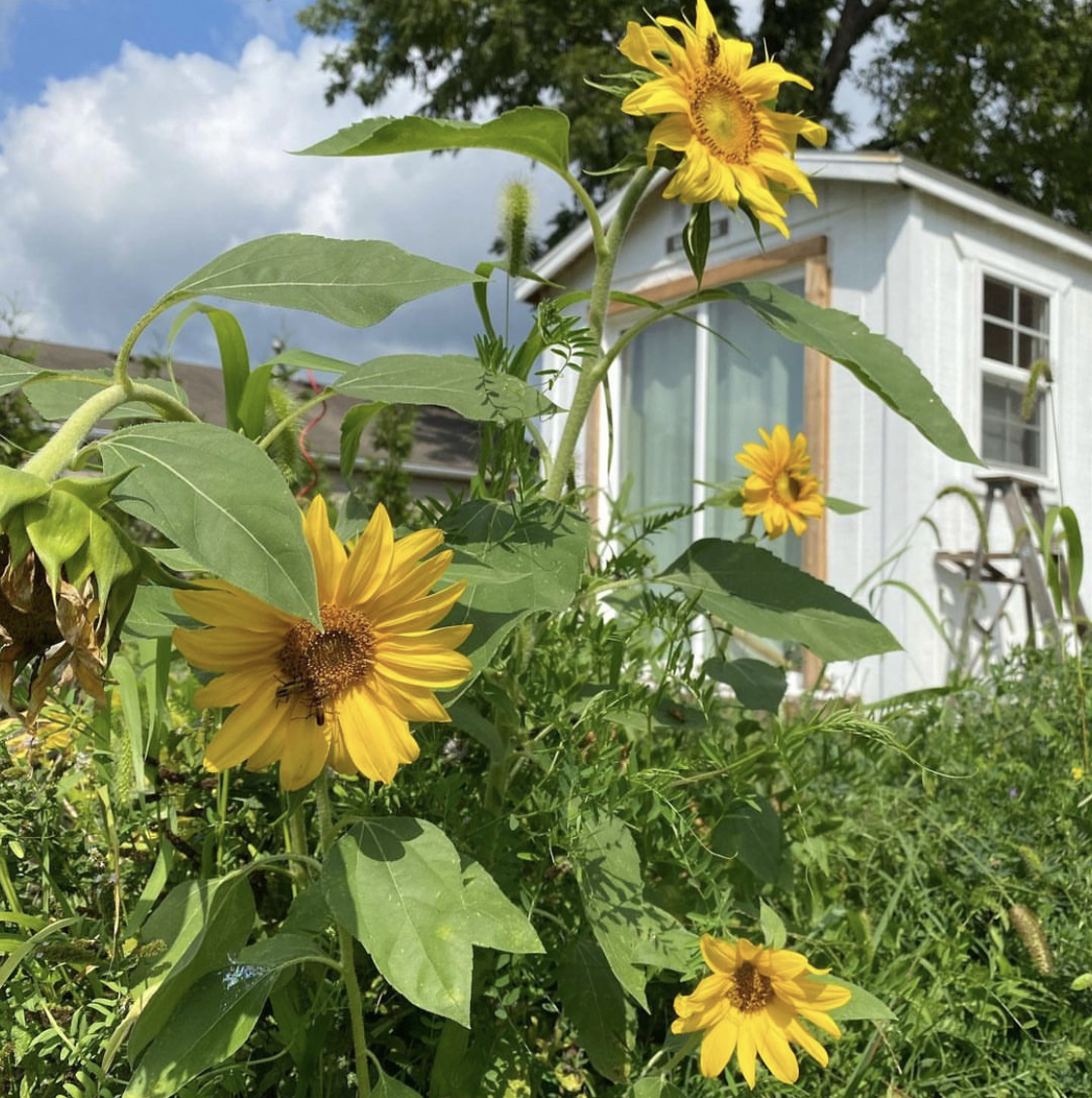Local environmental organizations in Licking County have come together to promote the creation of native plant habitats for pollinators, such as bees, butterflies, and hummingbirds – one of several grassroots pollinator projects now in more than a dozen states.
The group was inspired by ecologist Doug Tallamy’s visit to the area in December. Tallamy, a professor of agriculture in the Department of Entomology and Wildlife Ecology at the University of Delaware, spoke at Denison University, where nearly 600 attendees listened as he explained how nature, especially pollinators, need our help more than ever.
During his speech Tallamy outlined the critical role pollinators play in preserving the ecosystem as a whole. By replacing non-native plants with native species, he said, homeowners can create gardens that are ecologically functional and support local pollinators.
“Tallamy’s message was life-changing,” Zak Beckett, a Newark High School senior, said in a news release about the project. “I learned that if we all plant even a small plot with native plants, we can completely change the trajectory for our pollinators–changing from a path towards extinction to a path of survival. To enhance life for our pollinators is to enhance our future.”
Susan King, advisor to the 4-H Ace of Clubs program in Granville, shared that enthusiasm.


“His research and books completely revolutionized my way of understanding how we are a part of nature,” she said of Tallamy.
King described a “lightbulb moment” she had at the event – to instate Tallamy’s concept of a “homegrown national park” created out of private properties in the form of a something called a Pollinator Pathway. Founded in 2008, Pollinator Pathway is a nonprofit based in Connecticut, which aims to connect yards to public parks and encourage property owners to plant native flowers, shrubs, and trees to help sustain the pollinator population. Since then, the initiative has expanded to more than 300 towns across 15 states. “Even the smallest green spaces, home gardens and median strips” can be part of the project, the group says on its website.
Licking County is the first community in Ohio to join the initiative and was brought here through the work of an assortment of local environmental groups such as the Licking Land Trust, Granville Public Library and Dawes Arboretum.
King has been at the center of efforts to improve the environment locally. Just last fall she led her Ace of Clubs team in the creation of a “pocket park” located between the village offices and high speed internet provider, Kinetic.
“The kids did it all,” King said, “everything from planning which plants to have to having both a meeting with the village planning commission and the president of Kinetic.”
Leona Vrbanac, a teacher at Newark High School, has been working on similar projects with a group of her students. In 2015, she and her Global Foods class students planned and constructed The Sanctuary Garden.
The garden’s purpose is to connect students with the abundance of nature around them and interact with it. Everything Vrbanac’s class grows in the garden is later used in the classroom for culinary education.
“Through the garden, we have an opportunity to connect with all aspects of healthy living, including working in community, our own mental health, and the satisfaction of perseverance,” she said. “Everything we grow we use in the classroom to cook with – herbs, vegetables, everything.”
About three years ago, Vrbanac and her students began reading some of Tallamy’s books about pollinators. They took many of his ecological concepts to heart, including them in the design of their garden, especially his focus on saving the endangered monarch butterflies. Vrbanac and a group of her students attended Tallamy’s event in December where their beliefs were reaffirmed.
“We all came out of there inspired and full of energy,” Vrbanac said. “To see how interconnected we really are with nature had us all motivated to think how else we can help.”
Wendy Bittel, head of community engagement at Granville Public Library said she hopes the local Pollinator Pathway will bolster the environmental effort in Licking County by providing education and support to community members who are interested.
Karen Goodell, professor of Evolution, Ecology and Organismal Biology at Ohio State-Newark, praised the initiative, saying it, “provides a framework for tackling this issue while also connecting us to a larger network of people with similar goals.”
Pollinator Pathway’s primary goal is to increase the availability of pollinator habitats, enhance pollinator populations, and promote biodiversity. Interconnected corridors of pollinator-friendly habitats can improve pollinator foraging efficiency and support pollinator populations that can then assist in pollinating local food crops and native plant species.
“We all need to understand why the plants we put in our yards are part of the bigger picture,” King added, “not only for these pollinators but for biodiversity in general.”
These gardens, like the one King created with her 4-H group, are centered around the idea of planting native plants such as trees, shrubs or flowers. Milkweed, a perennial flowering plant, is one of these crucial native plants due to its connection to the endangered Monarch butterfly. Monarch butterflies lay their eggs on milkweed plants, and when the eggs hatch, the caterpillars feed on the leaves.
Homeowners don’t typically plant these “weeds” in their gardens and they have also been eradicated from fields by farmers, which is the main reason why the Monarch species is facing extinction.
The struggling bee population also will benefit from these pollination corridors.
These corridors will provide a range of benefits to bee populations, including increased access to native plants, reduced exposure to pesticides and enhanced nesting opportunities. Most importantly however is the need for habitat connectivity.
“These bees require their needs to be met within a fairly small radius,” Goodell said. “Typically most species need resources within 500 meters” or 550 yards.
Scientists at Pollinator Pathway back this up with their goal to connect properties within this distance. Creating these corridors allows for these insects to effectively escape the looming threat of urbanization and development which has destroyed their native habitats.
King also noted the importance of these tight-knit corridors and the flowering perennials found within them for the native bee populations.
“If you don’t have these plants, you don’t have these bees,” she said referring to the perennials.
In addition to promoting the creation and connection of native plant corridors, Pollinator Pathway in Licking County cross-promotes the partner organizations’ events and programs to amplify their impact. The events planned for spring include a plant swap, milkweed giveaway, a foraged plant dinner, native plant workshops, plant sales, speakers and more. Information for these events can be found on both their website as well as at the Licking Land Trust.
“We’re excited for the future,” King added, “Our team, the kids and the community as a whole is filled with energy and I feel all of us are motivated for making a change.”
Jack Wolf writes for TheReportingProject.org, the nonprofit news organization of the Denison University Journalism Program, which is sponsored in part by the Mellon Foundation.

